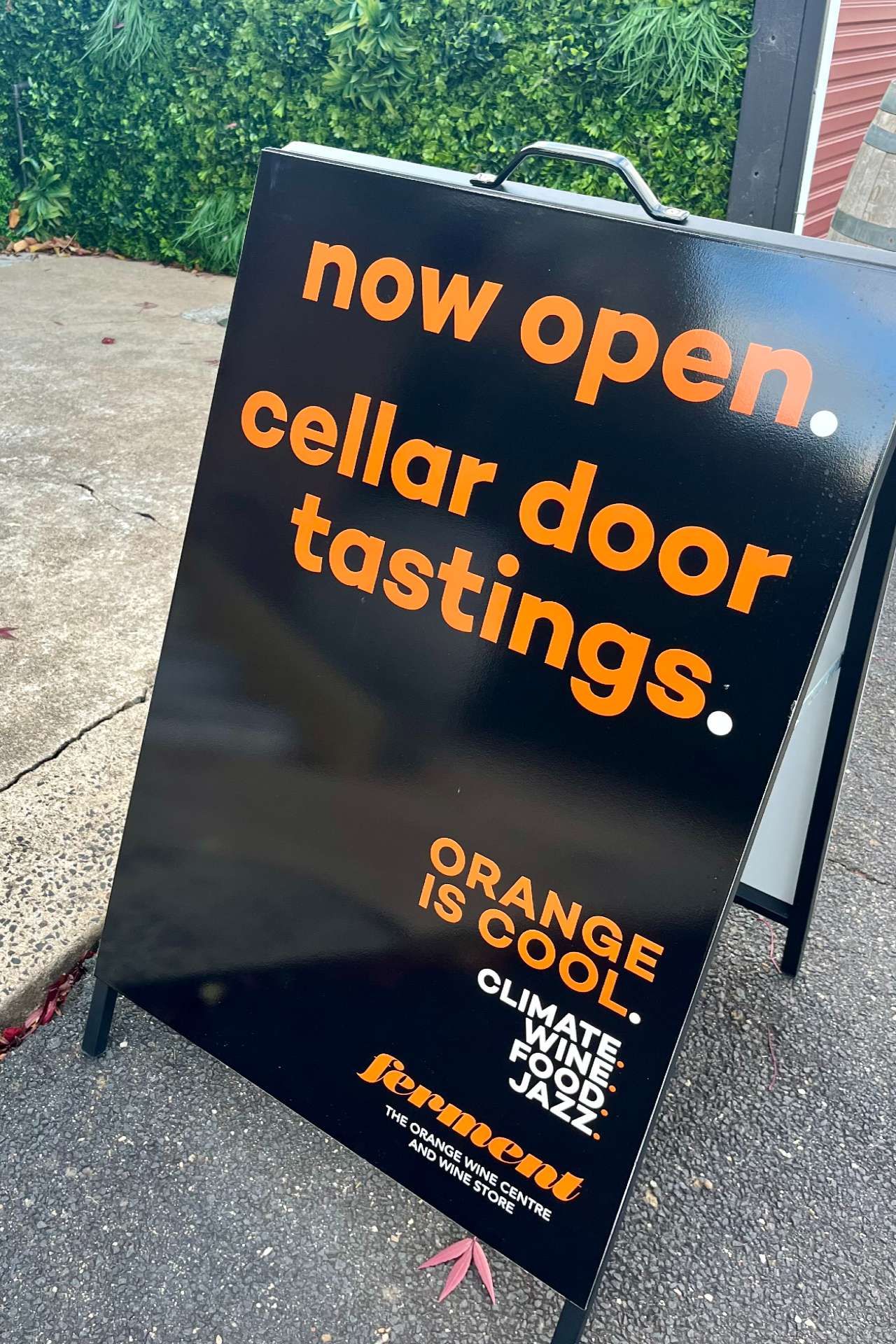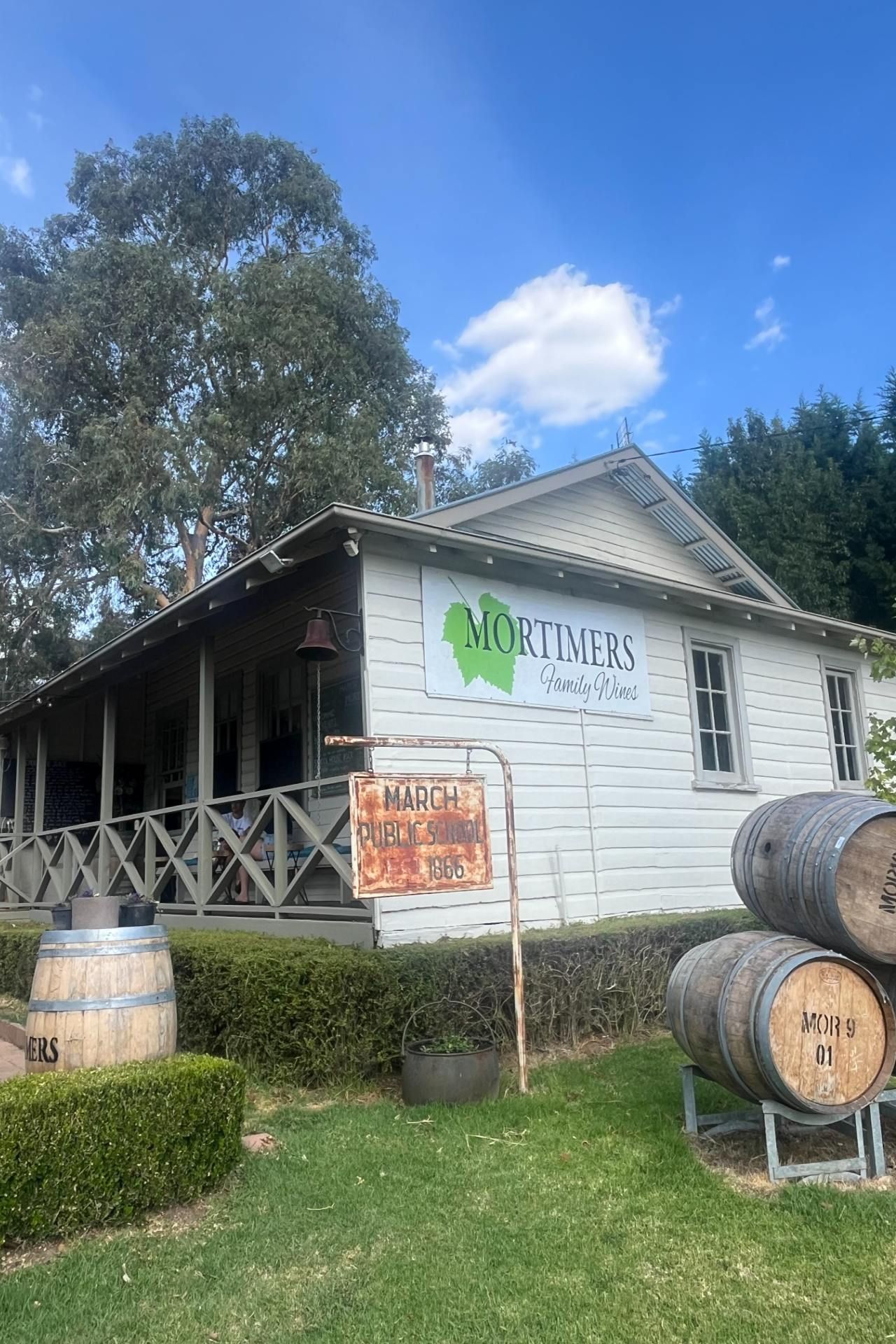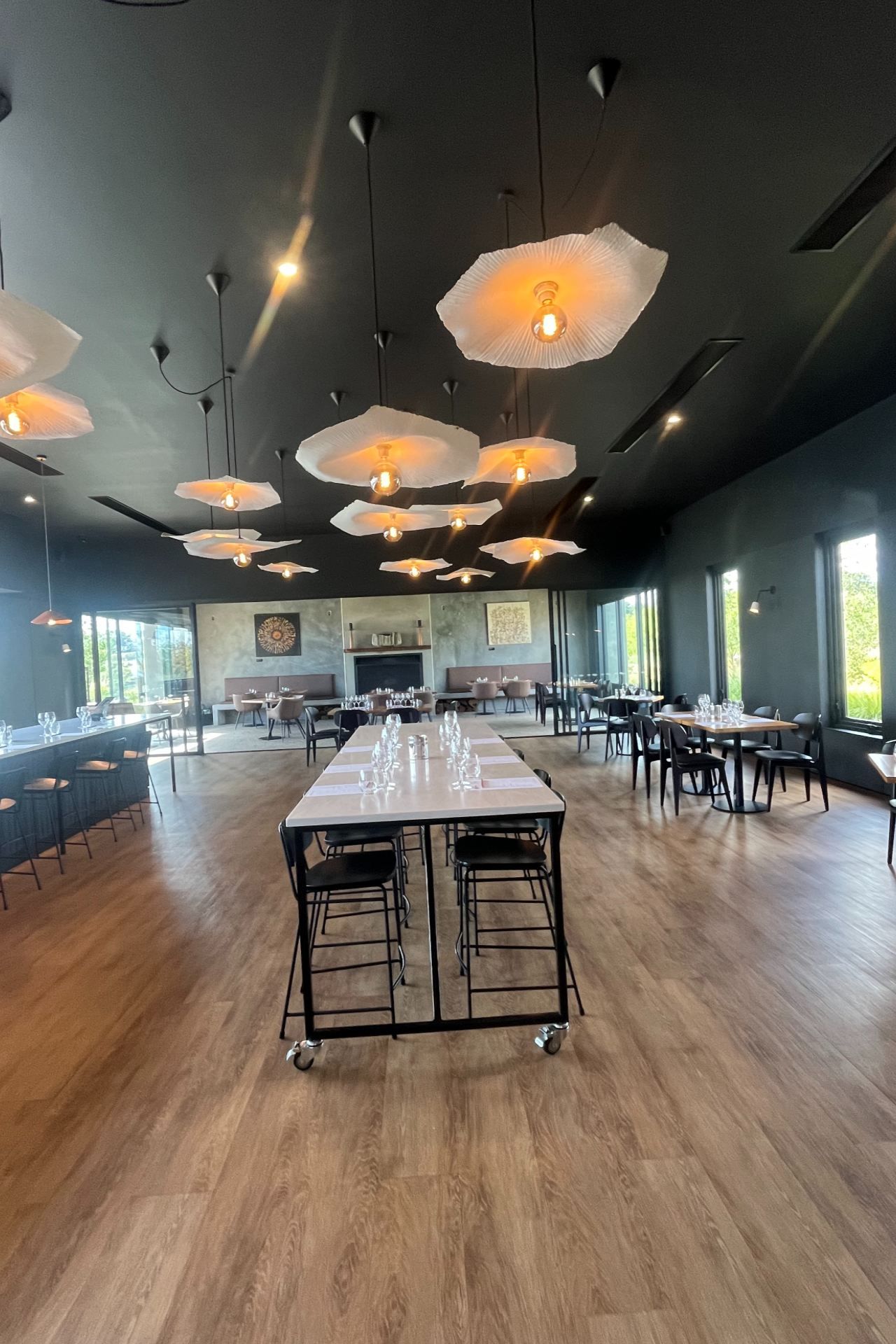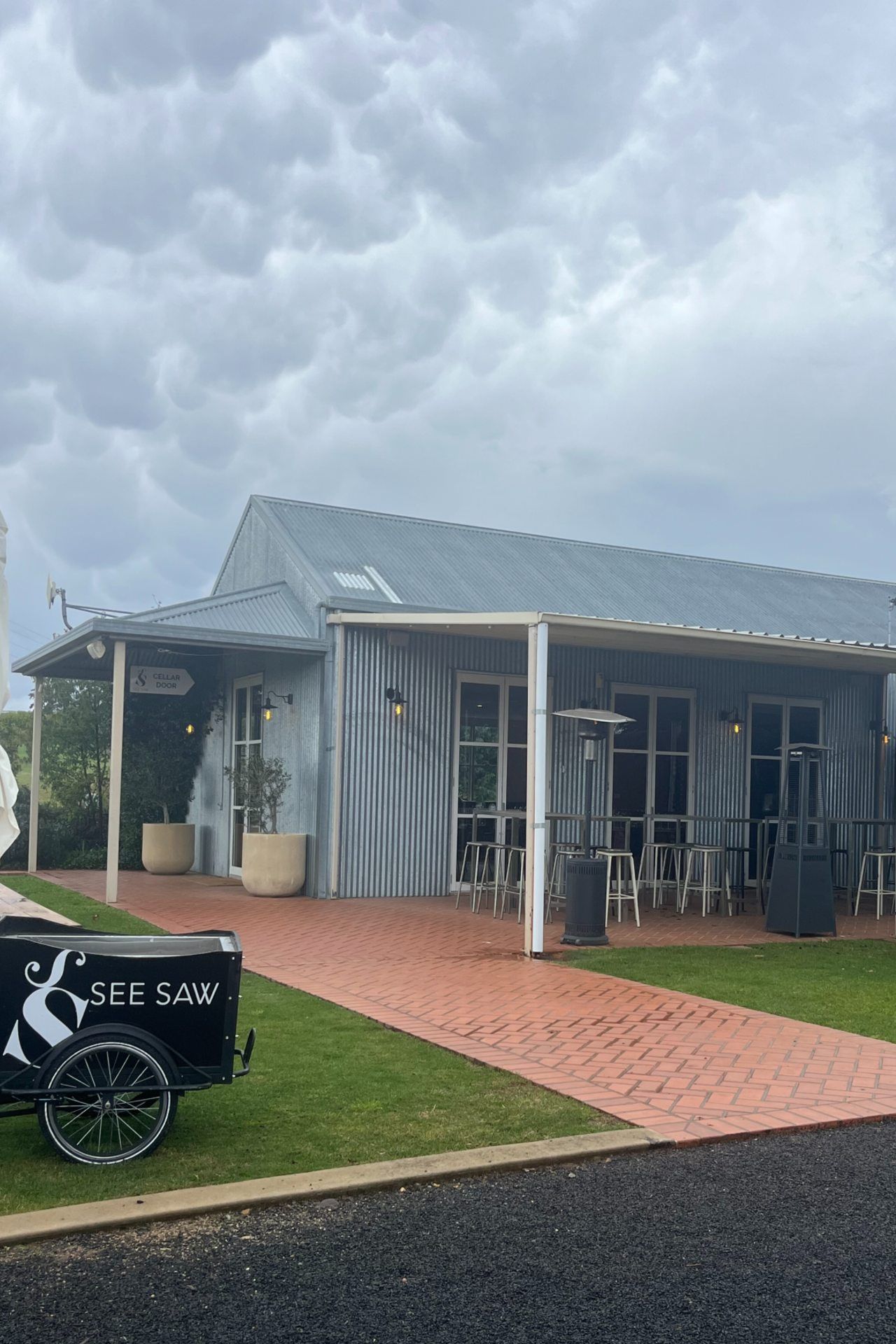With Sydney’s sparkling harbour in your rear view mirror, head west and the first thing you notice is the climb, upwards. This is Blue Mountain country, with bush vistas and old mining towns enticing visitors all year round. Most stop here, coo at the views, have an ice cream and head back to the city, it’s an hour outside of Sydney so what more is there to see?
Well, keep going west and those with a thirst for adventure and a side helping of wow-inducing food and wine are in for a treat.
A Town called Orange
When you think of a wine region in New South Wales, most cast a pin in its most famous wine region, the birthplace of wine in Australia - The Hunter Valley.
New South Wales (NSW) is a bit too north, humid and hot for vines, yet it is the second largest producer in the country after South Australia – mainly due to the bulk wine from the flat plains of the Riverina area southwest of Sydney.
When it comes to quality, other than the Hunter’s renowned producers, altitude becomes a hero. And this is where one of Australia’s ‘newest’ wine capitals comes into its own. With vineyards sitting just beneath the clouds at 1000 metres (or 3200 feet) above sea level, Orange is one of the highest wine regions in the country.
Less than 1% of vineyards in Australia sit above 600m, positioning
Orange as a unique wine destination
This cool climate wine region is still under the radar, and all the better for it – winemakers here are a little more experimental, innovative, less commercial. Orange is where on-trend, lower alcohol, complex, premium wines are taking the country by storm, winning awards and hearts in equal measures.
Today, Orange is home to NSW’s best organic wine (See Saw), one of the country’s most awarded traditional method sparklings (Printhie), as well as the 2025 Vigneron Trophy Winner from the Young Gun of Wine Awards (Rikard), and Phillip Shaw, twice winer of the International Winemaker of the Year (1986 and 2000) at the International Wine & Spirit Competition (IWSC) in London.
For me, Orange sits on the sophisticated side of the country town fence. It’s rumoured that a number of Sydney-siders upped sticks and moved to the mountains during the Pandemic and never went back, adding more businesses, restaurants and perhaps a little cosmopolitan cool to the region. Today, Orange hosts at least one wine or food festival every season, visitors are spoilt with cool wine bars and award-winning, ‘hatted’ restaurants sitting alongside championship golf courses, heritage homes and posh hotels; there are yoga studios, organic markets and boutique shops to rival Double Bay in Sydney - all encircled by more than 80 vineyards.
There’s a feel of New England as you ramble the town’s wide streets overlooked by huge pines and oak trees, but meet a local and you realise this is the Aussie bush, where everyone quickly becomes your mate and nothing is ever a worry. It’s welcoming, relaxed, and best of all the locals are on the right side of being just a little snobby about their food and wine.
Move over Napa, Orange has arrived.
Where it all began
But how did Orange pivot from an apple growing, gold mining country town to the gastronomic wine hub of NSW?
Like many wine regions in Australia, vines have dotted the landscape around Orange since the mid-1800s, however acknowledging it as a bona fide wine producing region is a more recent phenomena.
First and foremost, the country around Orange is the traditional home of the Wiradjuri people of central NSW, who still bless the land with their presence and reverence. It was its temperate climate and fertile soils that initially attracted orchard farmers in the 1840s, establishing the village of Orange in 1846, which grew exponentially with the discovery of Australia’s first payable goldfield 30 kilometres away at Ophir, followed by another down the road at Lucknow.
Orange was named as a tribute to Prince William of Orange (later King Willem II),
by one of Australia’s most renowned surveyor generals, and friend
of the prince, Sir Thomas Mitchell
The first vines were planted in1844 by John Glasson at Byng, and over the next couple of decades more vineyards were planted, mainly for private consumption, led by John Hicks at Canobolas, and the Bohringers at Borenore.
Fast forward to the 1950s, the first tendrils of commercial wine production were spearheaded by Harry Manuel, a government viticulturist who planted a five-acre vineyard with Jack Pryde near Molong – experimenting with Cabernet Sauvignon, Shiraz and Black Muscat.
Orange was one of 11 cities nominated to be Australia’s national capital
before Canberra was chosen in 1913
It took another 30 years before winemaking finally took off, led by early trailblazers, Nashdale Vineyard (1980), Canobolas-Smith Wines (1986), Bloodwood (1983), Cargo Road Wines (1983) and Philip Shaw Wines (1988).
And it wasn’t until 1997, that the Geographic Indication area (GI) of Orange as a wine region was made official, delineated as land above 600m elevation.
Wines outside the GI area or lower than 600m elevation cannot
be called Orange wines, making the wine region one of the only
in Australia defined by altitude
Today, Orange is home to over 1,500 hectares of vines, 80 grape growers and 40 cellar doors. This is wine tourism heaven with vineyards fanning out from the town into five wine routes, each within 5 to 15 minutes’ drive from each other. Here you are literally encircled by wine country.
Cool climate wine 101
If you have a thirst for elegant, lighter styles of wine then cool climate wines is your go-to, but what do we really mean by cool climate?
Influenced by latitude, altitude or the coast, without stating the obvious, a cool climate region’s temperature during the growing season is lower than its neighbours. Supported by a wide diurnal temperature range between day and night, the ripening process of the fruit is slowed and the growing season extended - every viticulturalists dream - culminating in grapes that combine naturally high acidity with complex, bright fruit flavours.
Outside of Australia, OG cool climate regions include Champagne and Chablis, Marlborough, Willamette Valley and the Mosel, with England the latest addition. In Australia, cooler areas include Tasmania and Mornington Peninsula, the Yarra Valley and Adelaide Hills.
Making cool climate wine is not easy - unpredictable weather makes vintage variation and disease pressure common, so it’s all down to careful site and grape variety selection.
Tending towards whites and aromatic reds, sparkling wines are the backbone
of cool climate areas, loving the fresh acidity it provides.
This signature freshness is a trademark of cool climate wines, along
with lower alcohol and a lighter body
What makes Orange different?
Without over generalising, Orange is influenced by three key factors – elevation (this is mountain country), geology (vines are grown on the slopes of an extinct volcano, Mt Canobolas), and climate (which is continental, and variable).
But this is Australia after all, and Orange is said to be the sunniest cool climate wine region in the country, with an average of more than nine hours of sunshine every day during the growing season from October to April, (compare this to four to seven hours for Tasmania – similar to southern England). This allows the fruit to fully ripen in most vintages, which can be rare in other cool climate regions.
The Great Dividing Range to the east of Orange acts as a barrier to the
maritime climate that affects The Hunter Valley. The subsequent
continental climate and its wide temperature deviation between day
and night slows ripening and creates those wonderful complex flavours
From a terroir perspective, the varying altitudes, soils and aspects create multiple microclimates across the region, allowing for a range of grape varieties and wine styles. The more elevated areas (up to 1000m) are on par with southern Burgundy, mirrored by similar rainfall and varieties. At slightly lower elevations (700-800m) Orange is more like Bordeaux with an average of 20.5ºC during the growing season, even if Orange does see more sunshine and less rain. And at its lowest, (600-700m), Orange is dry and warm, akin to the lower Rhone Valley.
Vineyards facing the warm westerly sun appeal to bolder reds and fuller white varieties, whilst the highest vineyards on the slopes of Mount Canobolas are destined for aromatic whites, lighter reds and sparklings.
Orange’s elevation can be a blessing and a curse – high elevation means more ultra-violet light increasing the phenolics in the berries. Canopy management is critical for exposure or shade, (and having experienced a harvest in Orange with its jungle like vines protecting the fruit within, picking is not easy). Looking over the region, the head architect of all these microclimates is Mount Canobolas, its diversity of rich volcanic, basalt-based soils, and underlining seam of limestone adding yet another component to site selection.
Orange is the new red, white and rosé
Following a similar trajectory to the UK, it was in the late 1980s that Orange became commercial as a wine region, and for many producers, traditional method sparkling wines, and lighter still wines make up the majority of labels.
Being Australia, Orange sees more sun and less rain (700 to 950mm per year) compared to 1000 to 2000mm in Southern UK, and there is always the threat of fires – the 2020 vintage was affected by smoke taint from fires across the state. But similarities with frost and disease pressure brings us back together again.
One of the key differences is the number of grape varieties grown in Orange, a reflection of its number of microclimates. In Orange, like much of Australia, Shiraz is king - and in my humble opinion, more complex and elegant than a warmer Barossa version, offering red berries, exotic warming spices and peppery notes. Chardonnay is the region’s hallmark white, produced in an array of styles, from crisp and elegant with citrus and fresh apple notes, through to robust with stone fruit, melon and cashew, many offering a distinctive struck match nose.
There’s also electric Rieslings, tropical, flinty Sav Blancs, along with Viognier as a single variety or blended with Shiraz. Cabernet Sauvignon is herbaceous and earthy, Pinor Noir is ultra perfumed and Malbec excels; there’s Gewurztraminer and the juiciest, most textured Pinot Gris’ I have ever tasted. Go down a few hundred metres and Italian and Spanish varietals make an appearance, notably Arneis, Vermentino, Montepulciano, Barbera, Nebbiolo, Sangiovese and Tempranillo – all loving the sunny, continental climate.
Styles of Wine
Many producers are low intervention, using indigenous yeasts, experimenting with skin contact fermentation, longer lees ageing and less use of oak (preferring French or European oak in large barrels). A number are organic or bio-dynamic, with Orange home to Australia’s first NCOS certified carbon neutral winery – Ross Hill Wines.
Malolactic fermentation depends on the vintage, many producers will stop MLF in warmer years to preserve their hallmark freshness, whilst whole-bunch fermentation is commonplace – especially with Shiraz and Pinot Noir – to enhance texture, smooth out tannins, and create an aromatic profile.
 |
 |
Cellar doors
For a town of around 42,000 residents, Orange is buzzy, attracting over one million visitors each year. Recently recognised by Halliday Wine Companion as New South Wales’s top wine region, booking ahead for tastings and restaurants is now mandatory.
The 40 cellar doors and tasting rooms range from upmarket, sophisticated establishments to shabby chic, bush farms. Most are small and family run - you’re more likely to meet the vineyard manager, the owner is probably pouring the wine, and the winemaker may pop in to tell a story or two. Even at the super-luxe cellar doors it’s relaxed, unhurried.
Grab a glass, sit outside, soak up the views, look out for a kangaroo
sunbathing between the vines, listen to kookaburras, and catch cockatoos
flashing white overhead
With five wine routes all close to town, each can be easily explored, offering innovative, premium wines, served by some of the friendliest people on the planet.
The Mountain Trail
10 mins drive south of Orange, stop to enjoy views from Mt Canobolas or a coffee at Lake Canobolas. Here you’ll find more than five cellar doors including Philip Shaw and Brangayne, Ross Hill and Colmar.
Cargo Road Trail
10 mins west of Orange, wind your way around the slopes of Mt Canobolas, and taste apples and cherries at farm gates. Over 12 cellar doors to discover, such as See Saw, Printhie and De Salis, Rikard, Rowlee, Nashdale, and Stockman’s Ridge.
The Borenore Trail
Slightly northwest of town, you can visit a number of cellar doors, such as Swinging Bridge, Hoosegg and Heifer Station.
Eastern Heritage Trail (Millthorpe area)
Southeast of Orange, head out through old mining towns and find more than eight cellar doors, ranging from Patina and Mayfield, to ChaLou, Angullong, Slow Wine Co and Tamburlaine Organic Wines.
Town Trail
Closer (or in) town, there’s Ferment, a tasting room that doubles up as a wine shop, and Mortimer’s, a family run cellar door in an old schoolhouse.
Orange Producers of note
Even though the UK is Australia’s largest export market, it’s mainly by volume rather than value. Making premium cool climate wine is not cheap, and being primarily small batch producers, there is not much exported from Orange to the UK. Two producers to keep an eye out which I see occasionally in the UK are Philip Shaw and Bloodwood wines.
My pick of top sparkling wine producers:
Printhie Wines - Colmar Estate – See Saw Wines – Gilbert Family - Rowlee
Innovative white wine producers:
ChaLou - De Salis Wines – Printhie Wines – Highland Heritage – Angullong – Brangayne of Orange – See Saw Wine – Ross Hill Wines – Swinging Bridge – Tamburlaine Organic Wines – HOOSEGG – Philip Shaw Wines – Colmar Estate
Noteworthy red wine producers:
Colmar Estate – Highland Heritage – ChaLou Wines – Rikard Wines – Swinging Bridge – Philip Shaw Wines – Brangayne – Ross Hill Wines – Tamburlaine Organic Wines – Bloodwood Wines – Angullong – Patina – Hoosegg
Next time someone asks what else is there to see beyond the Blue Mountains, tell them there’s a town high in the clouds called Orange, a place for sophisticated foodies and discerning wine lovers watched over by a volcano – or you may want to keep it to yourself, it’s Australia’s best kept secret after all.
 |
 |
Need to know
Orange is a 3 ½ hour drive from Sydney or slightly longer by train.
Flights are available to the local airport at Orange from Sydney (1 h), Melbourne (1h 30 mins) or Brisbane (2 h).






